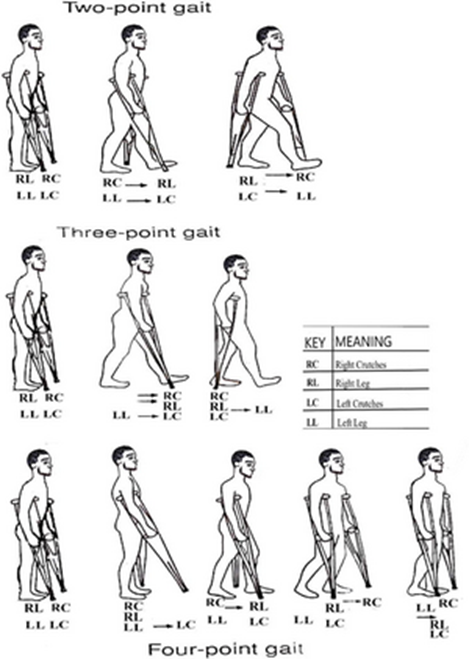A nurse is reviewing the laboratory results of a female client who has liver dysfunction a receiving a continuous tube feeding. Which of the findings should the nurse identify as a protein deficiency?
Albumin 3.1 g/dL (3.5 to 5.0 g/dL)
Transferrin 400 mg/dL (250 to 380 mg/dL)
Uric acid 2.3 mg/dL (2.7 to 7.3 mg/dL)
Total iron-binding capacity 488 mcg/dL (250 to 460 mcg/dL)
The Correct Answer is A
A. Albumin 3.1 g/dL (3.5 to 5.0 g/dL)
Albumin is a protein produced by the liver, and its levels are commonly used as an indicator of nutritional status, particularly protein status. In clients with liver dysfunction and receiving continuous tube feeding, a low albumin level indicates protein deficiency. Albumin plays a crucial role in maintaining oncotic pressure in the blood vessels, and decreased levels can lead to fluid shifts and edema, among other complications.
B. Transferrin 400 mg/dL (250 to 380 mg/dL):
Transferrin is a protein involved in iron transport. While high transferrin levels may indicate iron deficiency, they do not directly reflect protein deficiency.
C. Uric acid 2.3 mg/dL (2.7 to 7.3 mg/dL):
Uric acid is a waste product of metabolism. Low uric acid levels are not indicative of protein deficiency; instead, they may be seen in conditions such as liver dysfunction or decreased production of uric acid.
D. Total iron-binding capacity 488 mcg/dL (250 to 460 mcg/dL):
Total iron-binding capacity measures the amount of iron that can be bound by transferrin. Elevated total iron-binding capacity may indicate iron deficiency, but it does not directly reflect protein deficiency.
Nursing Test Bank
Naxlex Comprehensive Predictor Exams
Related Questions
Correct Answer is B
Explanation
A. Swing-through gait:
The swing-through gait is a more advanced gait pattern used by clients with significant lower extremity weakness or paralysis. It involves swinging both crutches forward simultaneously, followed by swinging both legs forward past the crutches. This gait is not appropriate for a client who can only bear weight on one leg.
B. Three-point gait:
The three-point gait is typically used when one lower extremity is completely non-weight-bearing. It involves advancing both crutches and then swinging the affected leg through to meet the crutches. Since the client in this scenario can bear weight on one leg, the three-point gait is the most appropriate choice.
C. Four-point alternating gait
Four-point alternating gait
The four-point alternating gait involves a sequence of movements where each crutch and each leg move alternately. The sequence is as follows:
- Move the right crutch forward(injured side).
- Move the left foot forward(non-injured side).
- Move the left crutch forward(non-injured side).
- Move the right foot forward(injured side). This gait offers stability and control but requires more effort and coordination.
D. Two-point alternating gait:
The two-point alternating gait involves moving one crutch and the opposite lower extremity forward simultaneously, followed by moving the other crutch and the opposite lower extremity forward. This gait pattern is typically used by clients who have good balance and strength in both lower extremities. It may not provide enough stability and support for a client who can only bear weight on one leg.

Correct Answer is C
Explanation
A. Grab bars are installed in the shower: Installing grab bars in the shower is a safety measure that helps prevent falls and assists the client in safely maneuvering in the bathroom. This finding indicates a safe environment and does not require intervention.
B. The hot water heater is set to 47°C (117°F): The hot water heater set at 47°C (117°F) poses a scalding risk, especially for older adults with decreased sensation or mobility issues. The recommended safe temperature for hot water heaters is typically below 49°C (120°F) to prevent burns. Therefore, the nurse should intervene to adjust the temperature to a safer level.
C. There is an area rug covering a tile floor.
Area rugs covering tile floors can pose a significant fall risk, especially for older adults with osteoporosis, who are more susceptible to fractures. The rug can slip or bunch up, leading to trips and falls. Therefore, the nurse should intervene to remove the area rug or secure it firmly to the floor to prevent accidents.
D. Prescriptions are stored in a medication organizer: Storing prescriptions in a medication organizer promotes medication adherence and organization, which is beneficial for older adults managing multiple medications. This finding indicates good medication management and does not require intervention.
Whether you are a student looking to ace your exams or a practicing nurse seeking to enhance your expertise , our nursing education contents will empower you with the confidence and competence to make a difference in the lives of patients and become a respected leader in the healthcare field.
Visit Naxlex, invest in your future and unlock endless possibilities with our unparalleled nursing education contents today
Report Wrong Answer on the Current Question
Do you disagree with the answer? If yes, what is your expected answer? Explain.
Kindly be descriptive with the issue you are facing.
